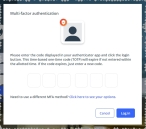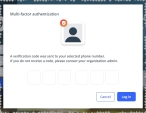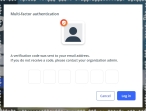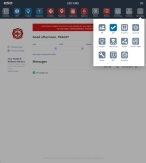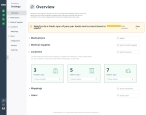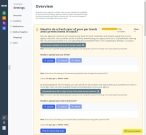Change item min and max par levels
A minimum (min) par level is the lowest number or amount of an item that a location (station, hospital, or vehicle) can have on hand, before they must obtain more of the item through transfers between locations or ordering from a supply vendor. Establishing a min par level for every item in the agency's catalog helps the location maintain sufficient stock for its needs, and prevents jeopardizing patient care from a lack of medications or medical supplies.
A maximum (max) par level is the highest (ideal) number or amount of an item that a location should have on hand at any time. If a location has more of an item than their max par level defines, the location should transfer the overage of that item to other locations that may need it. Establishing a max par level for every item in the agency's catalog helps minimize waste from items with expiration dates, and redistributes medications and medical supplies to locations that need them the most.
The Inventory module automatically tracks both these levels for you, and alerts you when an item falls below the minimum par level. This tracking is especially important for vehicles, which must have sufficient stock when responding to emergencies in the field, and which should not be operating if they are running below minimum par levels with their inventory.
You can change the minimum (min) and maximum (max) par levels your agency maintains for each item.
-
 If you have not done so already) Access the Inventory module in the ESO Suite.
If you have not done so already) Access the Inventory module in the ESO Suite.
-
Do one of the following.
-
(If you are already working in the ESO Suite) Click the Home icon in the upper left corner of the screen.
-
 (If you have not yet logged in) Log in to the ESO Suite.
(If you have not yet logged in) Log in to the ESO Suite.
-
In a web browser, go to https://www.esosuite.net/EsoSuite.
The ESO Suite login screen appears.
-
Enter your user name, password, and agency name, then click Let's Go.
If MFA is enabled, the Multi-factor authentication dialog box appears, displaying one or more methods you can use to verify your login credentials. The number of methods that appear in the dialog box depends on what MFA methods your ESO Suite administrators enabled in the Admin module.
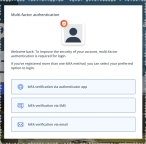
Click graphics
to open them.Information on enabling MFA and specific MFA methods is available in the Admin module online help, in Configure multiple-factor authentication.
Note: If your ESO Suite administrators have disabled MFA ("opted-out"), this dialog does not appear.
-
(If the Multi-factor authentication dialog box appears) Depending on which buttons appear in the dialog box, verify your login in one of the following ways.
 With an authenticator application.
With an authenticator application.
-
Click MFA verification via authenticator app.
The dialog box updates with boxes for entering the numbers of the authentication code, and the ESO Suite sends an authentication code to the authenticator application installed on your device.
-
Open your authenticator application and note the authentication code currently displayed.
-
Enter the authentication code displayed in the authenticator application.
-
Click Log In.
 With a text message (SMS).
With a text message (SMS).
-
Click MFA verification via SMS.
The dialog box updates with boxes for entering the numbers of the authentication code, and the ESO Suite sends an authentication code to the phone number recorded in your PM records and identified with MFA codes.
-
Enter the authentication code sent to your MFA-registered phone number.
-
Click Log In.
 With an email message.
With an email message.
-
Click MFA verification via email.
The dialog box updates with boxes for entering the numbers of the authentication code, and the ESO Suite sends an authentication code to your agency or department email address, recorded in your PM records.
-
Enter the authentication code sent to your agency or department email address.
-
Click Log In.
-
-
The ESO Suite landing screen appears.
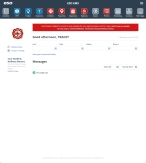
Click graphics
to open them.Note: If MFA is enabled, you can access and manage your MFA options through the PM module, on the Settings > Account page, as described in Manage a user account. If your agency or department has enabled MFA but has not purchased the full-featured version of the PM module, you can access your own MFA settings by clicking Change my Multi-Factor Authentication settings on the landing screen, then using the Settings > Account page that appears. If your agency has not enabled MFA, the Change my Multi-Factor Authentication settings link does not appear on the landing screen.
-
-
On the top side of the home screen, click Inventory.

The Inventory module opens, displaying the Action now page.
Click graphics
to open them.
-
-
In the left pane, near the bottom, click the Settings icon.

The Settings screen appears, displaying the Overview pane on the right. This page provides a summary of the information in the Settings pages. The Overview pane groups the information into drop-downs named Medications, Medical Supplies, Locations, Mappings, and Users. By default, these drop-downs are expanded; however, you can collapse and expand them as needed to view only the information you want.
These drop-downs contain one or more categories within them, to help further organize the information.
Example: The Locations drop-down contains the Stations, Hospitals, and Vehicles categories, to represent the different types of locations your agency may stock with inventory.
The numbers on the category summaries indicate how many items that your agency currently has enabled in the item catalog, in each category.
Example: If the numbers on the card are 44/49, that indicates that your agency has enabled 44 of the 49 available items in the catalog, and tracks the inventory records for those 44 items.
-
Depending on how many items you want to update the par levels for, do one of the following.
 Manually update individual item par levels.
Manually update individual item par levels.
You can update the par levels for individual items at every location enabled in the Inventory module.
-
Access the location containing the items whose par levels you want to update in one of these ways.
-
 From the category card on the Overview page.
From the category card on the Overview page.
-
Collapse the Medications and Medical Supplies drop-downs, or scroll down the Overview page until you find the Locations drop-down.
-
In the expanded Locations drop-down, on the category card for the location containing the item you want to update, click View.
Example: You want to update the par levels for items stocked at the Boone County Hospital. In the Locations drop-down, on the Hospitals category card, you would click View.
-
The corresponding location category page appears in the right pane, displaying the full listing of locations in that category.
Example: When your Inventory administrator originally configured the Inventory module, they enabled the Boone County Hospital, Mary Greeley Hospital, and Van Diest Hospital as hospital locations your agency supplies inventory to. If you click Locations > Hospitals, those three hospitals appear in the right pane.
-
-
To the right of the location's name, click Configure.
The location name Levels dialog box appears, set to the Medical Supplies bookmark in the left pane, and listing the Airway items at the top of the right pane.
-
(If the item you want is a medication) In the left pane, click Medications.
The right pane of the dialog box updates, and the full listing of medications your agency includes in its item catalog appears, beginning with the Controlled list.
-
Find the item you want to adjust the par levels for in one or both of these ways.
-
Scroll through the list in the right pane until you find the item you want to work with.
-
At the top of the right pane, in Search list, begin typing the characters in the name of the item you want to find.
As you type each character, the list of items in the pane reduces to only those containing that set of characters.
-
-
In the row for the item you want to update the par levels for, click the pencil (
 ) icon.
) icon. For that row, the cells in the Par (min) and Par (max) columns become editable fields, and blue check mark (
 ) and X (
) and X ( ) icons replace the pencil icon.
) icons replace the pencil icon. -
Click in the editable fields and change one or both par values as needed for that item.
Tip: Click the X icon to cancel the par values update.
-
Click the blue check mark icon to save your change.
A Success message appears in the upper right corner of the dialog box.
-
Close the location name Levels dialog box.
 Upload a spreadsheet to update par levels for a large number of items.
Upload a spreadsheet to update par levels for a large number of items.
-
At the top of the Overview page, on the right side of the Need to do a fresh sync of your par levels and current items in stock? section, click Open.
The section expands to display buttons and fields related to updating the par levels for the items in your agency's item catalog, and for updating the current number and quantity of items currently in its inventory.
-
 Download the blank par levels spreadsheet.
Download the blank par levels spreadsheet.
-
In the top half of this section, click Download available items list to set par levels.
The
Par_Levels.xlsxspreadsheet downloads to your default download location, or prompts you for a location, depending on your browser settings. -
Navigate to the download location and open the spreadsheet.
In column A, the spreadsheet lists every item in your agency's item catalog, and in row 12, the spreadsheet lists each of the locations your agency supplies. In row 13, under each location name, the Min and Max columns let you specify the min and max par numbers or amounts for each item in that location. The listing of items in your agency's item begins in row 14.
-
-
 Populate the spreadsheet with min and max data.
Populate the spreadsheet with min and max data.
Warning: Be sure to fill in all item rows with min and max par values. If you leave the cells for these values blank in an item row, when you later upload the spreadsheet, any existing min and max par values for the item are erased from the ESO Suite database.
-
In the yellow Protected View banner across the top of the spreadsheet, click Enable Editing.
-
In the row for the first item in your agency's item catalog, under the name of the first location in the spreadsheet, in the Min and Max columns, click the cells and enter the min and max par numbers for the item at that location.
Example: In the row for
Abdominal Pad 12x16, in the Min and Max columns underCentral (Main) Station), you may type3for the min par level for the pads, and12for the max par level at the Central Station. -
In the same row, under the name of the second location in the spreadsheet, in the Min and Max columns, click the cells and enter the min and max par numbers for the item at that location.
Example: Under the
East Station, you may type2for the min par level for the pads, and6for the max par level at the East Station. -
Continue moving across the same row and specifying the min and max par numbers for every location in the spreadsheet.
-
Repeat steps ii–iv for every item row in the spreadsheet.
-
Save your changes in the spreadsheet.
-
-
 Upload the updated par levels spreadsheet.
Upload the updated par levels spreadsheet.
-
In the Inventory module, at the top of the Overview page, under Ready to upload your par levels?, click Choose.
-
Use the file browser that appears to navigate to and open the spreadsheet you populated with min and max par values.
The name of your file appears under Ready to upload your par levels?, and the Upload and Cancel buttons activate.
-
Click Upload.
A progress bar appears across the bottom of the section, then a success message appears in the upper right corner of the page when the Inventory module finishes uploading the spreadsheet to the ESO Suite database.
-
-
 Verify that the par levels you specified in the spreadsheet appear in the Inventory module as expected.
Verify that the par levels you specified in the spreadsheet appear in the Inventory module as expected.
-
In the upper left corner of the screen, click the Inventory list icon.

The Inventory list page appears, displaying a listing of every item in your agency's item catalog at the location selected in the upper right corner of the page, from the Viewing menu. The page contains information about the number or quantity of each item currently in the inventory at that location, the min and max par levels for that locations, and so forth.
-
In the inventory list, find the items you updated in the spreadsheet, and compare the current values in the Inventory module to the values you specified in the spreadsheet.
-
-

